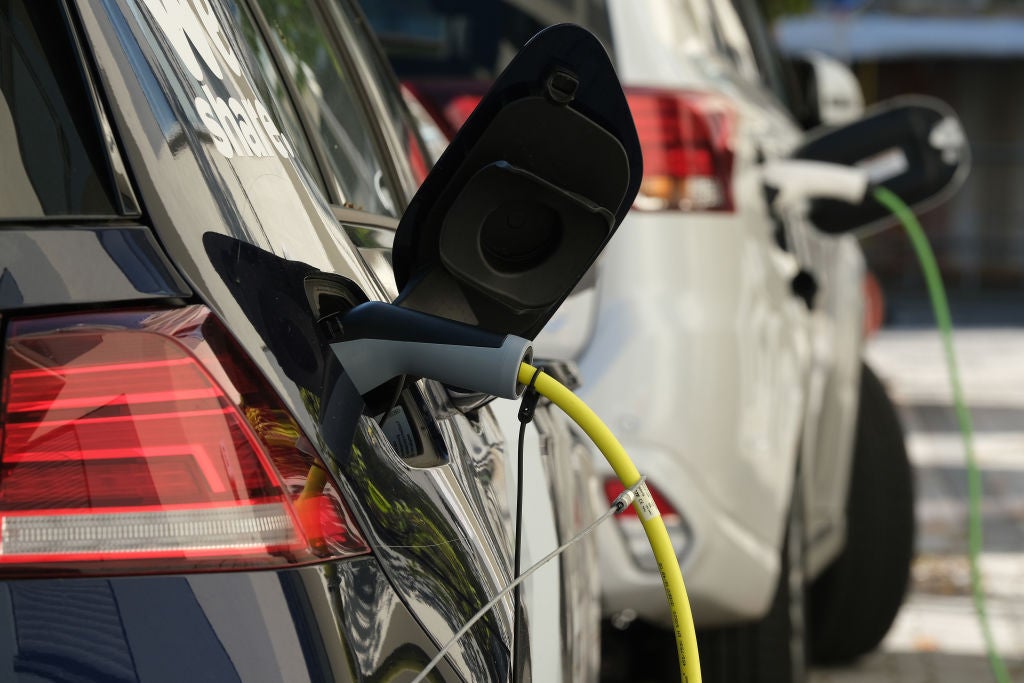In a January 2022 interview with Handelsblatt, German transport minister Volker Wissing said that “hybrids can contribute” to the country’s electric vehicle (EV) target. The statement came just a few months after the new German government agreed to aim for “at least 15 million fully electric vehicles by 2030” in its coalition agreement.

When Energy Monitor asked for clarification on whether the minister meant that plug-in hybrid electric vehicles will now be included in the target, the Ministry of Transport referred to a February 2022 interview with the Frankfurter Allgemeine Zeitung.
“I’m not concentrating on the question of whether there will be 15 million electric vehicles or maybe even 16 million in the end,” Wissing said. “The question of whether hybrid vehicles can be included is also not decisive, because such discussions do not contribute to climate protection. It makes much more sense to take concrete action to expand the charging station infrastructure.”
The switch from cars with internal combustion engines to electric vehicles is part of Germany’s plan to be carbon neutral by 2045. The country has set preliminary targets of cutting greenhouse gas emissions by at least 65% by 2030 and 88% by 2040. With the transport sector being responsible for around a fifth of emissions, electrification is important for achieving these targets.
On 17 March, ahead of a meeting of EU environment ministers, the German environment ministry also announced on Twitter that the country backs the end of internal combustion engine cars from 2035. It is a momentous shift for a government that has until now defended conventional cars as potential zero-emission vehicles if they run on zero-emission fuels, such as renewable hydrogen-derived e-fuels. Germany refused to sign a COP26 declaration on zero-emission vehicles because it focused only on fully electric vehicles.
Plug-in hybrids (PHEVs) are often seen as a transition vehicle toward zero-emission transport. PHEVs can run on electricity but switch to its combustion engine if the battery runs out of power, therefore extending its range. Plug-in hybrids are essential for the successful ramp-up of electrification, according to Joachim Damasky, managing director of technology and environment at the German Association of the Automotive Industry (VDA).
“It’s crucial that the customer accepts the [electric] offer,” he says. “If necessary, plug-in hybrids can run on both electricity and petrol or diesel. This makes it easier for many people to switch to e-mobility.”
While the combustion engine increases its range, the continued use of fossil fuel decreases the targeted emissions benefits vis-à-vis a fully electric vehicle. In fact, the emissions from PHEVs are likely more damaging than advertised due to them not being charged as often as their manufacturers assume, according to a 2020 analysis from the International Council on Clean Transportation, an independent nonprofit.
“On average, the real-world fuel consumption and CO2 emission values of plug-in hybrid vehicles for private drivers in Germany are more than twice as high as according to the official test procedure,” said Patrick Plötz, the lead author of the study in a summary. “For company cars, the deviation is even four times the official values.”
The share of electric driving of plug-in hybrids is too low, affirms Wiebke Zimmer, deputy director at Agora Verkehrswende, a Berlin-based think tank focused on the decarbonisation of transport. She agrees that PHEVs can be attractive for consumers, especially with the financial incentives the German government offers for buying electric – these cover plug-in hybrids.
In 2020, German sales of plug-in hybrids outperformed sales of battery electric vehicles. Zimmer fears the promotion of PHEVs could have a negative effect on Germany’s overall emission targets.
[Keep up with Energy Monitor: Subscribe to our weekly newsletter]
“It doesn’t make sense to promote plug-in hybrids when we want to phase out the sale of internal combustion engines by 2035,” she says. “If we have a lot of hybrids in the car fleet in 2030, we will not reach our climate targets for the transport sector.”
Part of the reason that company cars run more on the combustion engine is the range. But financial factors also play a role, as “most companies reimburse diesel, not electricity”, making it cheaper to drive on the combustion engine, Zimmer says.
Road pricing that targets combustion engine driving could be an instrument to address both the low share of electric driving of plug-in hybrids and promote fully electric vehicles, she suggests. The German government already targets transport and heating fuels with the national emissions trading system (nETS), a system of carbon pricing similar to a tax that will increase annually. The UK is currently considering adopting a road pricing scheme to cover the drop in fuel-duty revenues from the shift to electric.
Like Wissing, Damasky suggests that improving infrastructure by scaling up charging points is the best way to change driver behaviour.
“The more possibilities there are to charge one’s e-car, the better these possibilities will be used,” he says. “Therefore, the expansion of the [public and private] charging infrastructure is so important.”
In the end, emissions targets need to be met one way or another.
“We believe that Germany needs 15 million fully-electric vehicles on the road by 2030,” says Zimmer. “The transport sector has emission targets for each year, and if the sector doesn’t reach those targets, the ministry of transport needs to come up with a plan to reduce emissions by other measures. If that’s the case, the transport minister might very well change his mind again on including plug-in hybrids.”




